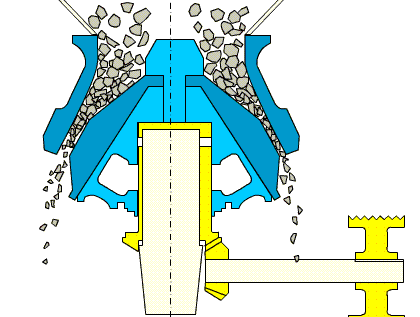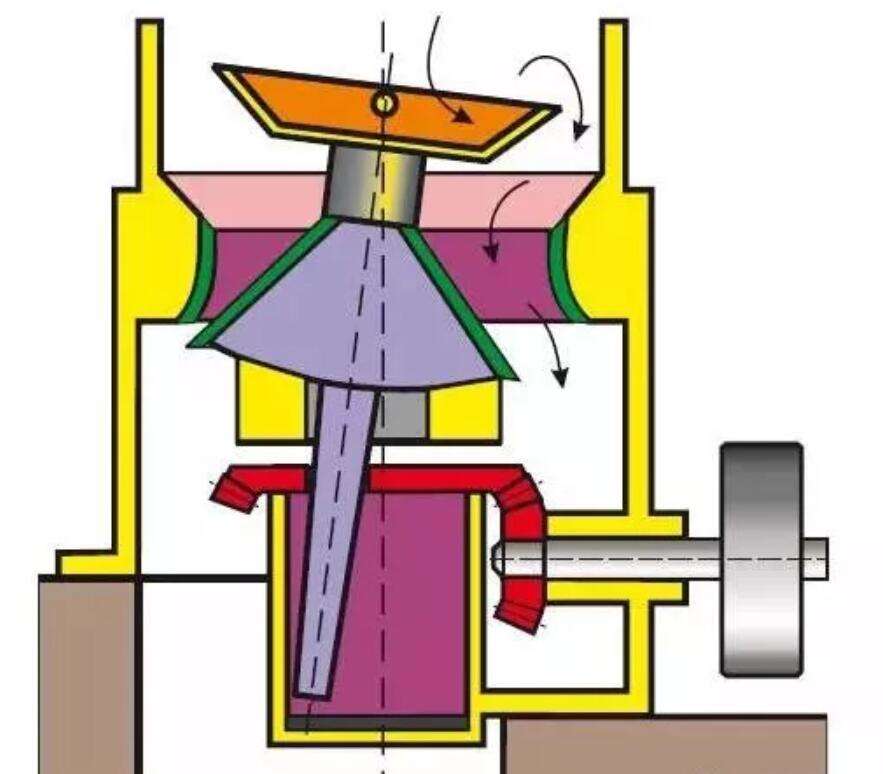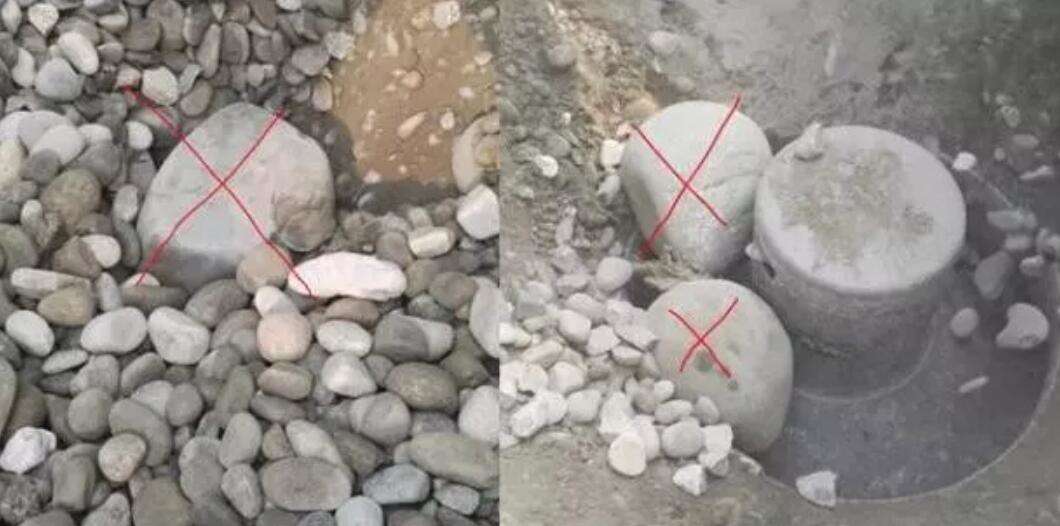Cone crusher is one of the popular medium and fine crushing equipment, which is suitable for crushing all kinds of medium and hard materials. However, many users find that sometimes even if the production is at full capacity, they still feel that the capacity of the crusher is not high enough to reach the ideal production state. This article shares 11 operation skills to improve production capacity, hoping to be helpful to you.

To stabilize the output, quality and production line load of sand and gravel products, the first thing to ensure is that the parameters of the conical crusher's tight-side discharge outlet are unchanged, otherwise it will easily cause the product size to increase unexpectedly, which will affect the entire production line system and final output.
For example: The tight side discharge port of a certain equipment is set to 10mm. However, due to negligence in inspection and equipment wear, this parameter is expanded to 13mm. Then the product of this equipment smaller than 10mm will be reduced by 15%, and the output of the target product will be significantly reduced. The annual income lost by quite a few sand and gravel producers in this respect is eye-catching.
Suggest: It is recommended that the tight-side discharge port parameters be checked every time the shift is changed.
If a cone crusher is "hungry" or "full" due to factors such as unstable feeding, its product grain shape and product rate will also fluctuate. The half-cavity cone crusher is unsatisfactory in terms of gradation and needle shape.
Suggest: Sand and gravel producers try their best to ensure that the cone crusher runs in a full cavity, and do not overfeed the material in order to obtain a better throughput and grain shape. This is especially important for the third-stage cone crusher (short-head cone crusher) that produces the final product.
Only a small amount of raw materials will not reduce the burden of cone breaking. On the contrary, too little raw materials will not only damage the product output and poor particle shape, but also have an adverse impact on the cone broken bearing.
According to the working principle of cone breaking, the actual power of cone breaking shall not be less than 40% of the rated power. In order to obtain proper "load bearing positioning" and maximize productivity, the actual power of cone breaking should be maintained between 40% - 100% of the rated power, and 75% - 95% of the rated power in operation is the best choice.
Operation beyond the rated power will affect the service life of the cone and cause various problems.
It is recommended to use a vertical deflector to guide the feed drop point in the center of the cone break feed port. Once the falling point is eccentric, one side of the crushing chamber is full and the other side has no or less material, which will cause adverse effects such as lower crusher throughput, more needle and flake products, large product particle size and so on.

Improper operation: Once this happens, operators tend to reduce the parameters of the tight side discharge port and try to make the crusher produce products with the target particle size. However, it is easy to cause problems such as overload and runout of the adjustment ring on the side with too much feeding. In the long run, it will cause problems such as inclination, warping and base damage of the adjustment ring, resulting in greater production loss.
During feeding, it is necessary to avoid the concentration of large-size stones on one side and small-size stones on the other side, so as to ensure uniform mixing of stones.
Once the feeding is uneven, due to the abnormal increase of bulk density, the side where the small-size stones are concentrated is prone to compaction and blocking, resulting in the runout of the adjustment ring. In the face of the runout of the adjusting ring caused by material blockage, the operating personnel will be forced to increase the discharge port parameters, resulting in the increase of product particle size. In the long run, it will also cause problems such as damage to the adjustment ring, resulting in greater production losses.

As the "enemy of production", the cone breaking buffer silo and other related equipment also need to be carefully arranged.
The rational use of buffer bin / hopper and variable speed feeding device (conveyor belt and plate vibrating feeder) can make the operating personnel keep the cone breaking "full" state for a long time and easily increase the cone breaking output by 10%.
There are three design upper limits for cone breaking: upper limit of throughput (capacity), upper limit of power and upper limit of crushing force.
The upper limit of cone breaking capacity refers to the maximum throughput of the crusher. A cone breaking machine in "full cavity" operation has reached the maximum throughput. If it exceeds the limit, the feed inlet will overflow; The actual power of the crusher will increase when the feeding increases and the material is crushed more finely; With the same power, the crushing force generated between the conical broken bowl tile and the crushing wall will also increase with the increase of feeding amount and the finer crushing of materials. When the crushing force exceeds the upper limit, the adjusting ring will bounce and loosen.
When the crusher operates at the maximum throughput, the actual power and crushing rate are still slightly lower than the upper limit. Running beyond the upper limit of rated power and crushing force will cause cone breaking overload and permanent fatigue damage. This damage is irreversible and will continue to accumulate, and finally shorten the service life of cone breaking.
If the cone breaking operation exceeds the upper limit of breaking force (adjusting ring runout) or exceeds the rated power, you can:
Slightly increase the parameters of tight side discharge port and try to ensure "full cavity" operation“ The advantage of "full cavity" operation is that there will be a stone beating process in the crushing cavity, so that the product particle shape can be maintained when the discharge port is slightly larger;
Or reduce the feeding rate, but it may be difficult to ensure excellent particle shape.
Cause analysis: Generally speaking, the runout of cone breaking adjusting ring or exceeding the rated power is caused by jamming, eccentric feeding, uneven feeding, excessive fine material in feeding, large mud content, wrong use of crushing wall and bowl lining, or simply because the operator sets the discharge port of cone breaking edge too small.
Influence: If proper drive belt tension is not maintained, incorrect or driver maintenance is ignored, belt slip and crusher speed drop will occur during operation. The stone throughput of the crusher with reduced speed decreases sharply, while the power consumption increases sharply, and the unit energy consumption increases, increasing the operation cost.
Proposal: The speed monitoring device can be installed at the intermediate shaft and other positions, connected to the PLC or directly connected to the alarm device. Once the speed drops, the maintenance personnel can be notified to adjust the belt, which can prolong the service life of the belt and ensure excellent production capacity and energy consumption.
Fine material in feeding: the material with particle size equal to or smaller than the material set at the tight side discharge port in the stone entering the crusher. According to experience, for secondary cone breaking, the fine material content in the feed shall not exceed 25%; The fine material content in the three-stage cone breaking feed shall not exceed 10%.
Causes and effects: Excessive fines are usually caused by the problem of vibrating screen, which may be caused by insufficient screen hole diameter or insufficient screening capacity. Excessive fines will lead to insufficient power utilization and abnormal increase of unit energy consumption in the crushing process.
For small and medium-sized cone breakers, the maximum suitable height for materials to fall from the feeding equipment to the feed inlet is about 0.9m. If the feeding height is too high, the stone is easy to "rush" into the crushing chamber at high speed, resulting in impact load on the crusher, and the crushing force or power exceeds the design upper limit.
Influence: This problem will cause excessive pressure or tension on crusher components, resulting in additional maintenance costs and low output.

Cone crusher is widely used in mine production due to its high crushing efficiency, low maintenance cost and large output capacity.

Cone crushers are available in either a bushing, bearing and even a combination of roller bearing and sleeve bearings.

In general, impact crushers both vertical shaft (VSI) and horizontal shaft (HSI), the main difference from the cone crusher is the type of crushing force. The i
Fill your requirements here, and we'll send the custmized solution and quotation to you by the reserved contact information.